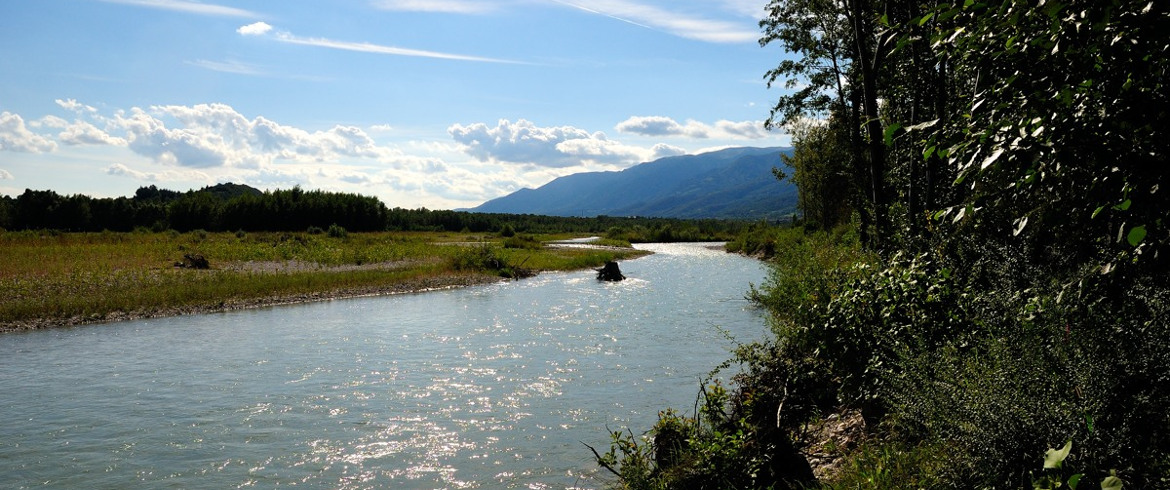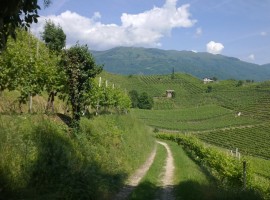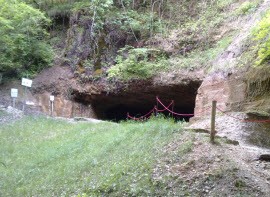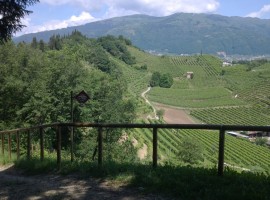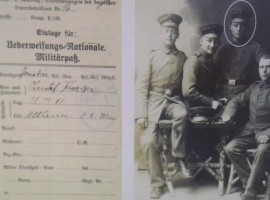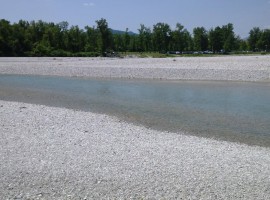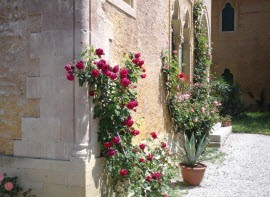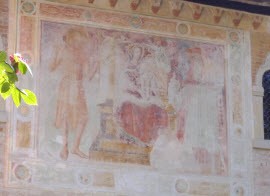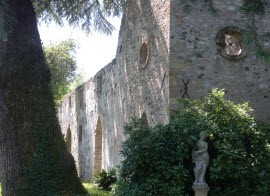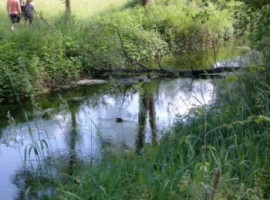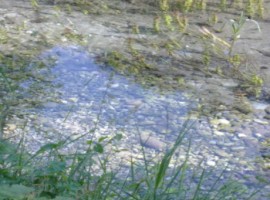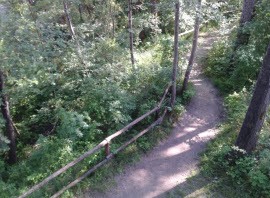The itinerary is 30 km long but you don’t need to do it all to catch the important sites and war memorials along the way.
Just decide how long you want to walk for and what you want to see, check the “Da ponte a ponte” website and make sure you bring a good pair of trainers and a camera to capture the amazing views of the river and its surroundings.
- The itinerary Da ponte a ponte (From bridge to bridge) along the river Piave runs through the Prosecco vineyards photography by Cristiana Pedrali
- The cave used as a war hospital by the Austrain troops fighting along the river Piave during 1WW photography by Cristiana Pedrali
- Green Cartize vineyards around Vidor (Treviso), a bucolic view along this new itinerary designed by Da ponte a ponte photography by Cristiana Pedrali
The Piave- the first transgender river
The Piave has played an important role in Italy’s history.
After the defeat at Caporetto in 1917, the remaining Italian troops gathered on the bank of the Piave river.
They had lost a lot of their men, had no equipment, no food and no more energy to fight the war. They were completely dispirited.
And yet they were able to stop the Austrians gaining control of the river and started to attack right from their riverbank trenches.
The Piave became the “no pass over” limit and it soon became symbolic of Italy’s recovery in the war and the final victory.
A song about those legendary events written in 1918 became the national anthem many years later after the armistice was signed in 1943, with the aim of instilling a sense of pride after the events of the Second World War.
What’s interesting though is that the deep felt patriotism between the two world wars was actually responsible for the river changing its gender.
The river was feminine- la Piave-until the end of the WW1. But the role of the river in halting and forcing back the enemy was deemed so important that statesmen and poets decided the river had to have a “male soul” and was therefore masculine.
Most Italians have since called the river il Piave and have never known about its female history.
- War memorial in the sanctuary of Monte Castello in Vidor (Treviso)
- The Piave river photography by Cristiana Pedrali
- Crossing the Piave river bicycles on your backs photography in the sanctuary pof Monte Castello in Vidor (Treviso)
The Abbey of Santa Bona and its terrace
The Abbey of Santa Bona is in Vidor (Treviso), a small city along the river Piave.
It houses the remains of the Egyptian martyr brought here after one of the crusades in the Holy Land and its surrounding area in the Middle Ages.
But the Abbey we admire today is not the original one created at the end of the 12th century;this Benedictine Abbey was completely destroyed during WW1.
It was rebuilt in the following years thanks to the countess of Miniscalchi and her daughter Margherita. The two noblewomen rebuilt it as a sign of love for their beloved son and brother Alberto, who died in the war.
A huge amount of their time was dedicated to its rebuild.
The place is now suspended in a dreamlike atmosphere: full of roses, a cloister next to the abbey, and old, magnificent trees.
A few metres from the Abbey and the Villa stands a large terrace overlooking the plain and the river.
It betrays no sign of the destruction inflicted many years ago, and is a great place to admire the area’s beauty.
- The roses of the Abbey of Santa Bona at Vidor (Treviso) photography by Cristiana Pedrali
- The remains of the fresco in the cloister of Santa Bona Abbey in Vidor (Treviso) photography by Cristiana Pedrali
- A detail of the garden surrounding the Abbey of Santa Bona at Vidor (Treviso) photography by Cristiana Pedrali
The natural oasis of Fontane Bianche: herons, foxes and nature in bloom
Not far from the river bed, the natural oasis of Fontane Bianche runs along the Soligo river over an area of about 100 hectares.
The name Fontane Bianche derives from the natural spring water pits that are crystal clear, that come from deep springs and not from the Piave river.
The lukewarm water helps flowers to blossom and makes the area the perfect stopover for migrating birds, like herons.
Foxes and other small animals such as squirrels have also made their home here.
- The itinerary in the Oasis Fontane Bianche at Sernaglia (Treviso) photography by Percorso a Fontane Cristiana Pedrali
- The Oasis Fontane Bianche in Sernaglia (Treviso) photography by Cristiana Pedrali
- The itinerary through the wood of Fontane Bianche at Sernaglia (Treviso) photography by Cristiana Pedrali
While this river was once the frontline of a terrible war a hundred years ago, it may be the home of another battle, as there is talk of building a dam to avoid flooding. The majority of the locals are against the project though, and are ready to stand up and be counted: male or female, a river needs to run free.
Start your tour of this special area from the Eco Hotel San Giacomo where Giamaica and Sara will take good care of you and provide helpful tips for your visit, as well as suggesting its hidden gems of local cuisine and wineries.
Info about itineraries: there are four different routes, mapped on “da ponte a ponte” website: from here you can also download maps in pdf or in gps.
Cover image: ph. by Guido Andolfato, via flickr
